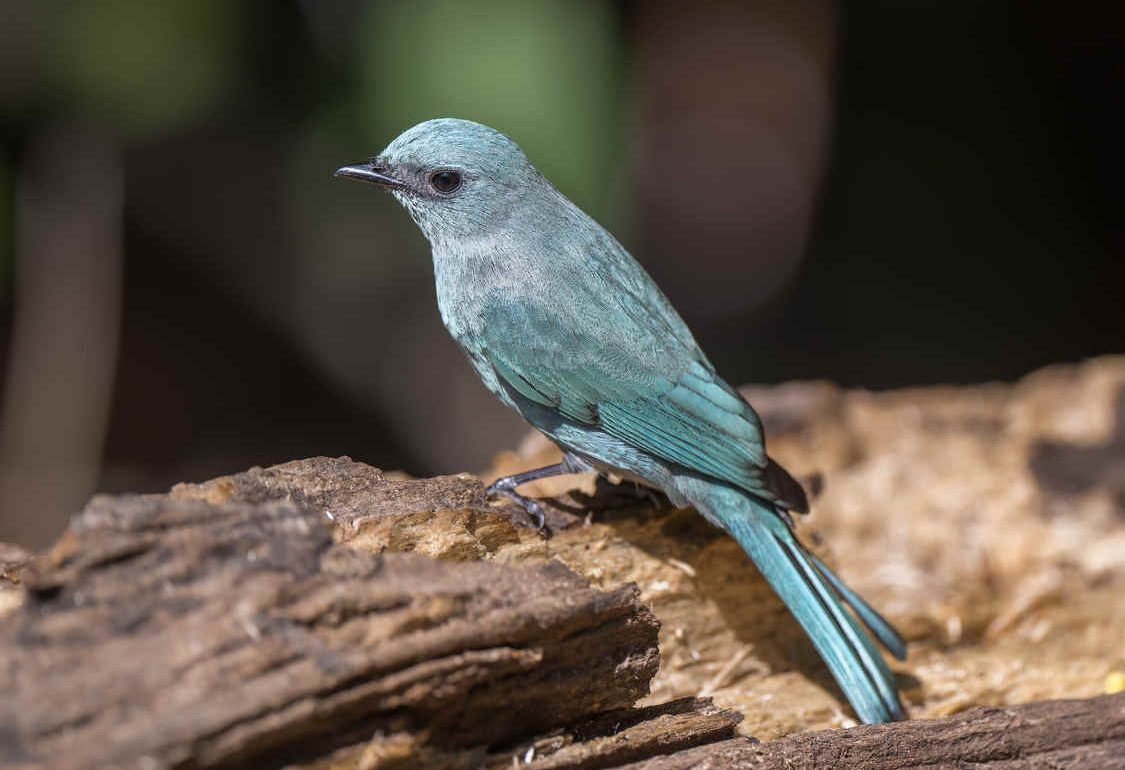
Przevalski’s Pinktail is named after a person, and a highly controversial one at that. For example, he once said something like “Only under Russian guidance can these backward tribes be elevated from their primitive state to true civilization” about some other people, somewhat rich, particularly coming from a Russian, but maybe similar to what Putin would say about Ukrainians. So, these bird names derived from people are controversial, to say the least.
Fortunately, it is not quite the same for chemicals. A few birds are named after chemicals, and some chemicals are named after birds. This is what this post is about.
Bird names derived from chemicals mostly take their cue from the color of specific chemicals.
For example, Indigo is a blue organic compound obtained from the leaves of some plants. Its proper chemical name is [2(2′)E]-[2,2′-Biindolylidene]-3,3′(1H,1′H)-dione, which is a bit harder to pronounce than indigo.
Indigo
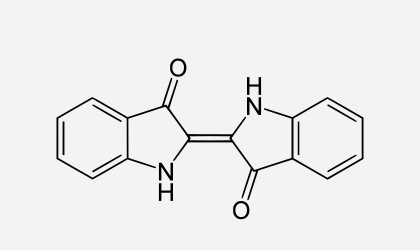
Shamelessly, some birds just adopted this chemical as part of their names, probably without any thought of potential copyright violation. So, we have the Indigo Bunting as well as 16 other bird species with “indigo” in their common name as listed by the HBW.
A similarly popular chemical, an element, to be specific, is sulfur.
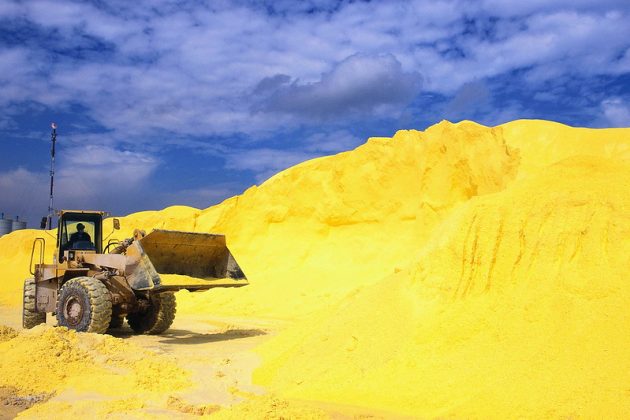
The formula is too simple to show here (basically just an S), but the yellow color has been the inspiration for many bird names such as
- Sulphur-crested Cockatoo
- Sulphur-breasted Myzomela
- Sulphur-breasted Warbler
- Sulphur-bellied Bulbul
Sulphur-breasted Warbler
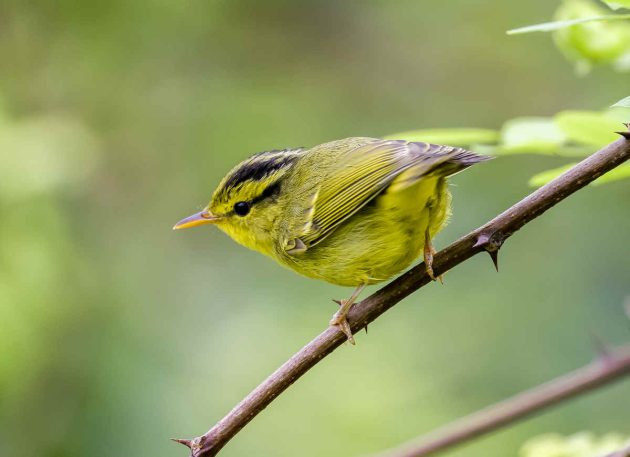
or (for the more scientific-minded)
- Emberiza sulphurata (Yellow Bunting)
- Pitangus sulphuratus (Great Kiskadee).
Yellow Bunting
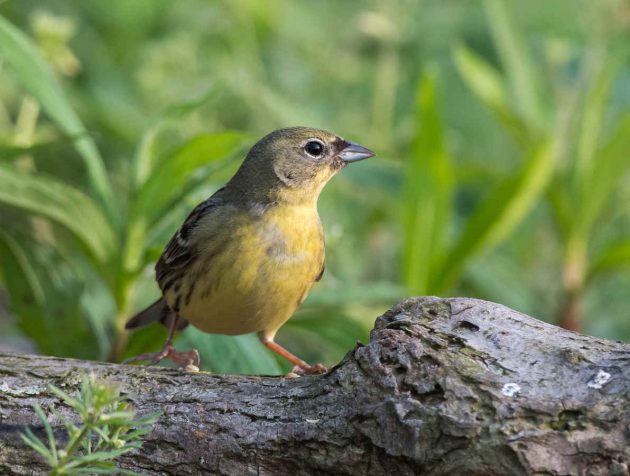
Less interesting are those names that refer both to chemical elements and colors – I will only give a few examples:
- Golden Pheasant
- Silver Pheasant
- (there is no Bronze Pheasant – and while there are many species with “bronze” in their names, this is not a chemical element or compound)
- Copper Pheasant
- Leaden Honeyeater
- Cobalt-winged Parakeet
- Ferruginous Hawk (from “ferrum”, Latin for iron, chemical symbol Fe)
Golden Pheasant
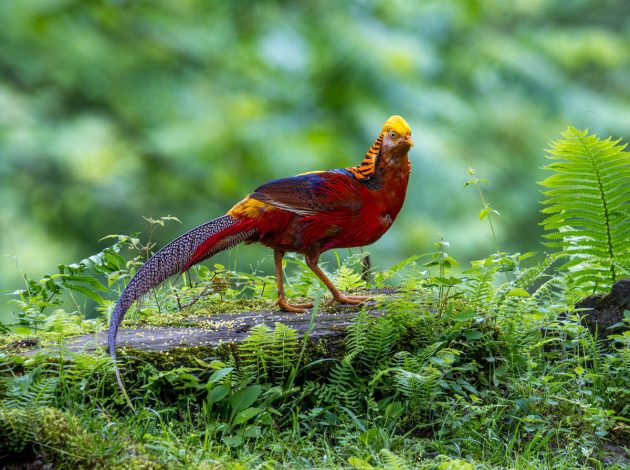
Several scientific names also reference chemical elements and/or associated colors, such as
- Gallinula chloropus (Common Moorhen – the chloropus indicates that the bird has yellow-green or chlorine-colored feet)
- Jacamerops aureus (Great Jacamar – aureus means golden)
- Larus argentatus (European Herring Gull – argentatus means ornamented with silver)
Common Moorhen
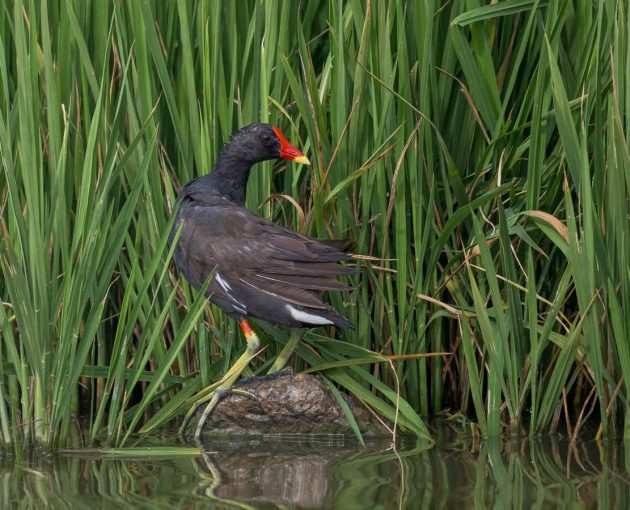
It gets a bit more interesting with the Verditer Flycatcher.
Verditer Flycatcher
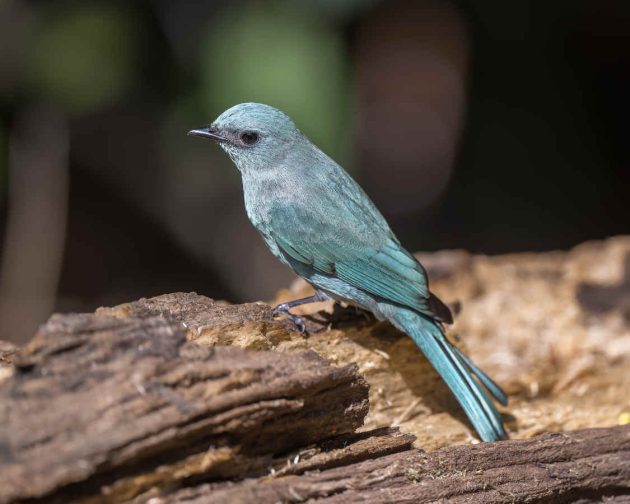
Verditer is a blue or green inorganic synthetic pigment, chemically basic copper carbonate. It was manufactured in the 16th century as a replacement for the more expensive azurite and malachite pigments. Blue Verditer is Cu3[OHCO3]2 while green verditer is Cu2[(OH)2CO3]. (And yes, you can see that the WordPress theme 10,000 Birds is using was not designed for chemicals – I have no clue how to get it to understand the concept of subscripts).
The Malachite Sunbird and the Malachite Kingfisher both get their name from malachite, a copper carbonate hydroxide mineral with the formula Cu2CO3(OH)2. So, like the Verditer Flycatcher, these names are based on copper compounds.
Malachite Sunbird
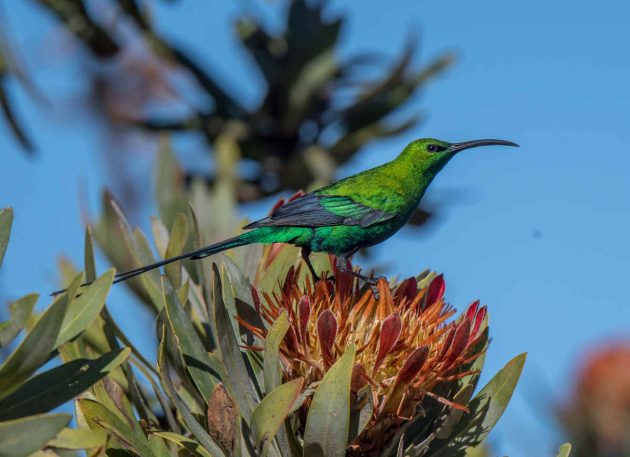
Malachite Kingfisher
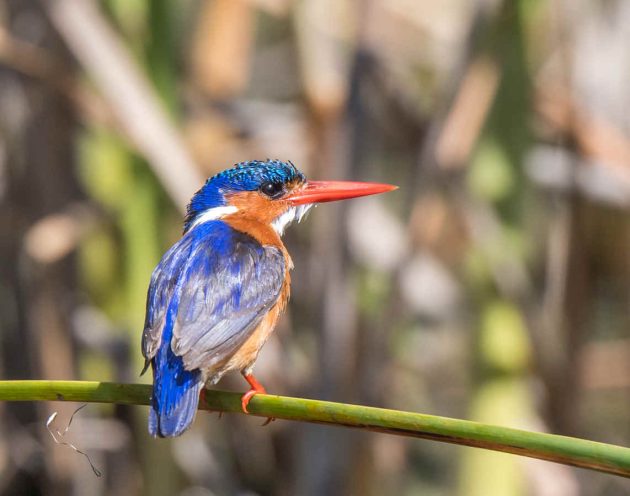
There are quite a few more birds named after minerals, based on the color of the minerals:
- Lazuli Bunting: Lapis lazuli is a deep blue metamorphic rock
- Vermilion Flycatcher: Vermilion is a vivid reddish-orange pigment
- Carmine Bee-eater: Carmine is a rare mineral with a deep red color
- Emerald-spotted Wood-Dove: Named for the iridescent green “emerald” spots on its wings. There are also many “Emerald” hummingbirds (e.g., Cuban Emerald, Glittering-bellied Emerald).
- Amethyst-throated Sunangel: Amethyst is a purple variety of quartz
- Ruby-throated Hummingbird: The male’s gorget is brilliant, iridescent red, like a ruby. The Siberian Rubythroat is another example.
- Sapphire Flycatcher: Named for the deep blue, sapphire-like plumage of the male.
- Citrine Wagtail: Citrine is a yellow-orange variety of quartz
- Opal-crowned Manakin: Named for the iridescent, multi-hued crest, reminiscent of an opal.
- Berylline Hummingbird: Beryl is a green mineral, fitting for a green hummingbird.
But naming does not only go one way, from chemicals to birds, but also the other way around. Several chemicals, particularly those associated with specific birds – are named for them. To be fair, these are not the “proper” scientific names that are based on their formula, but as such names are often long and clumsy, the bird-derived names are used much more frequently.
Take Turacin, a copper-based red porphyrin pigment, and Turacoverdin, a green copper-based pigment also found only in Turacos.
Purple-crested Turaco
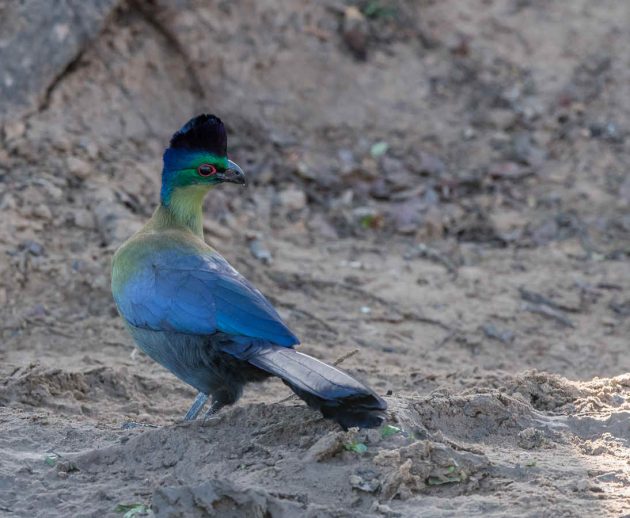
Livingston’s Turaco
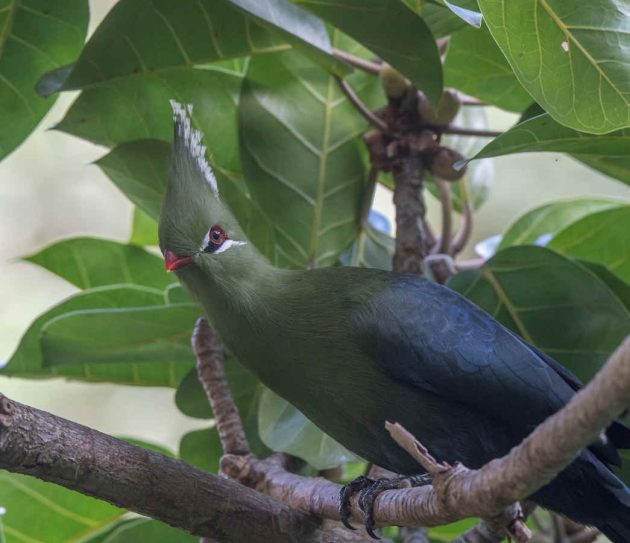
Or Psittacofulvins. This is a group of pigments only found in parrots, which they synthesize internally. The name is a combination of the Latin word for parrot (Psittaco) and the word “fulvin” (a group of yellowish pigments). Psittacofulvins are pigments that give parrots their characteristic red, orange, and yellow colors.
The saddest such example is a chemical named Starlicide (3-chloro-4-methylaniline). This chemical is specifically named because it kills its main target species, European Starlings, though it also kills other birds. It works by causing uremic poisoning and organ congestion, leading to death within 8-48 hours after ingestion.
Sources:
- Indigo dye
- Verditer
- Malachite
- Turacin
- Turacoverdin
- Psittacofulvin
- The mystery of turacin and turacoverdin: why do Turacos have unique feather pigments?
Photos/Illustrations:
- Indigo structure: public domain
- Sulphur: “CB025025” by tpmartins is licensed under CC BY-NC-SA 2.0.

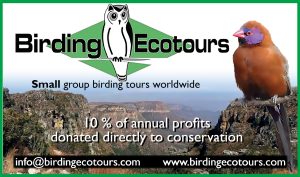
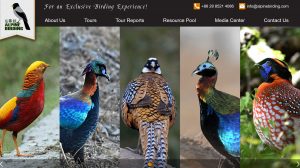
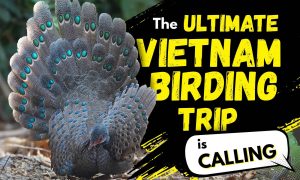
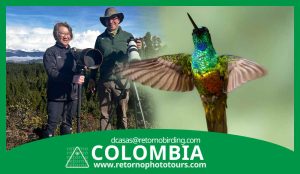
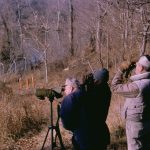
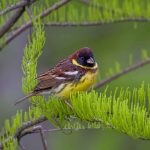
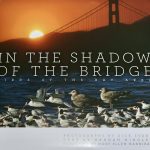
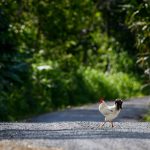

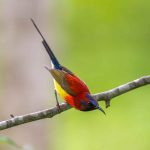
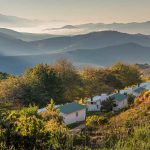
Fascinating!
Confucius said “ Instruct a wise man and he will be yet wiser”.
I feel wiser! ?
Thanks, Brian!
Quite agree with Brian. Absolutely fascinating.
I too, feel wiser after having read this post. Although I am fully aware from the time I shut the laptop I shall immediately revert to my prior ignorant state.
It says that WordPress can include text snippets in LaTeX.
https://wordpress.com/support/latex/
That way you could present chemical formulas with subscripts, say $CO_2$ would appear as you think it should.
Thanks for the hint – I just tried but it does not seem to work, but maybe I did something wrong.
I’m a chemical engineer-birder, but still picking up a lot of new knowledge from these posts. Absolutely fascinating and representing a lot of research by the author. I do wish the equivalent of the starlicide upon the inventor of the same – starlings are better people than humans!